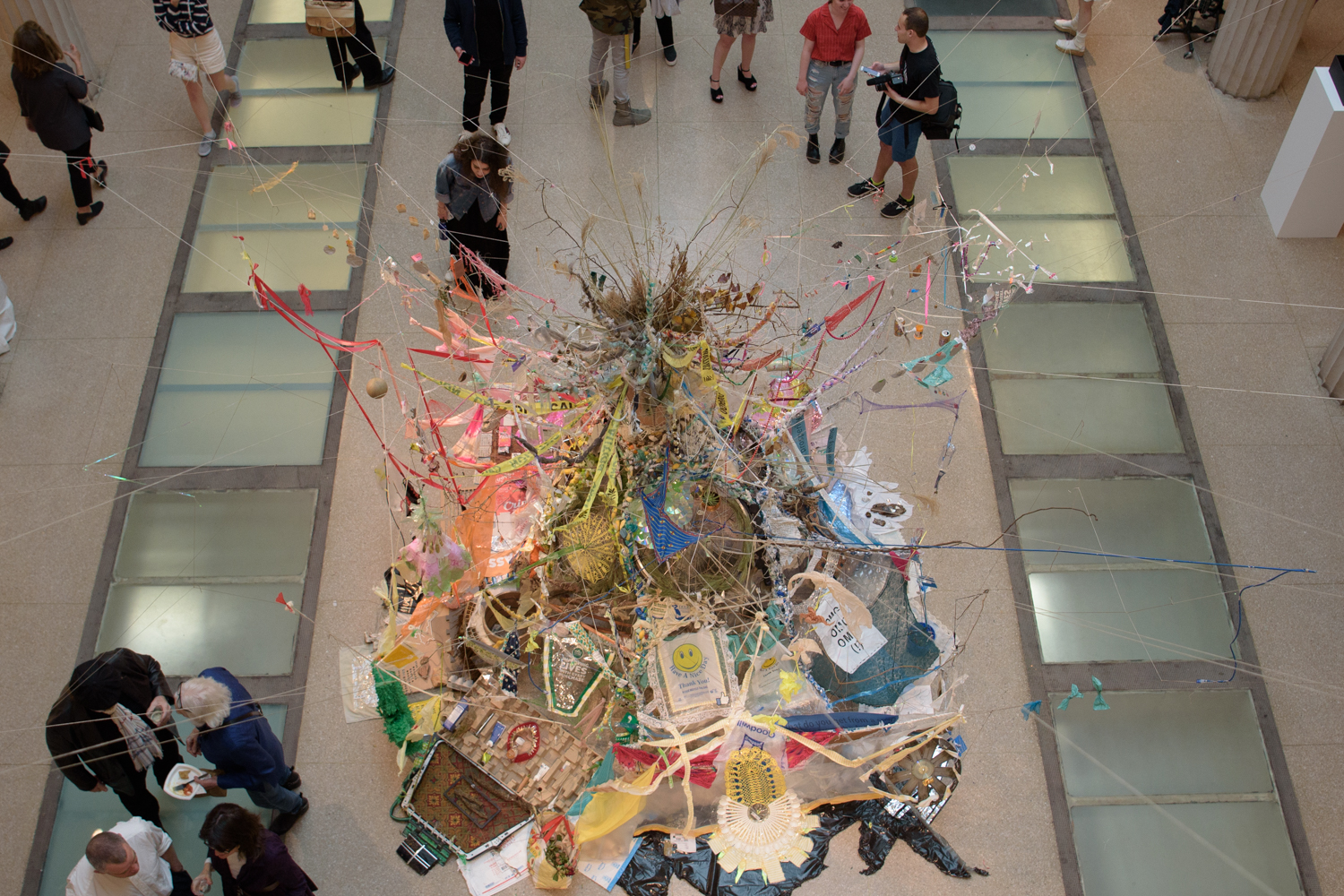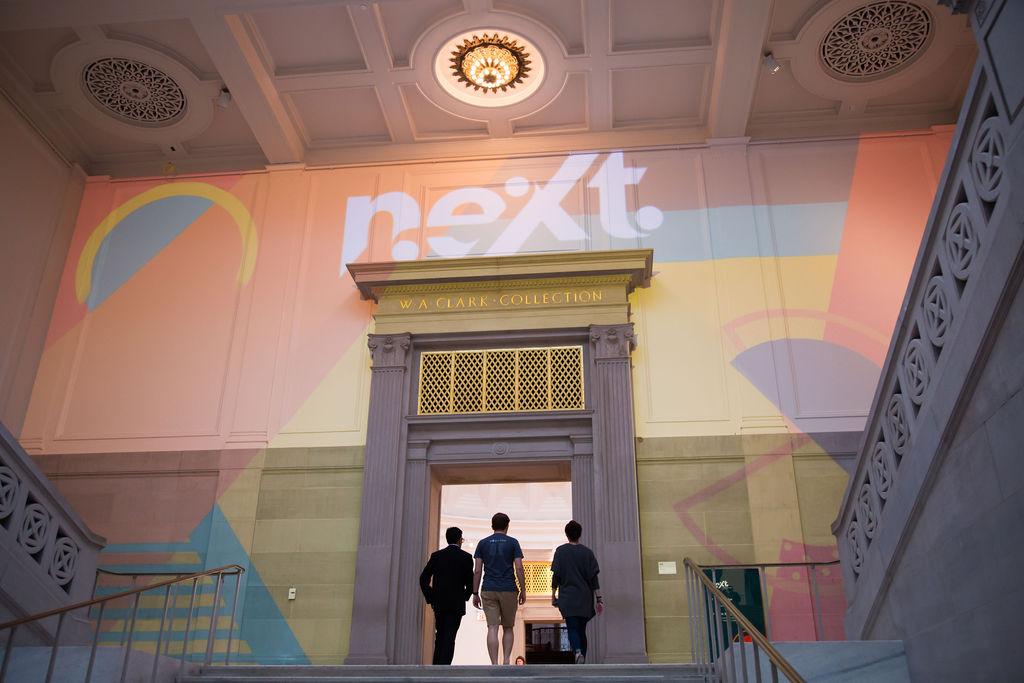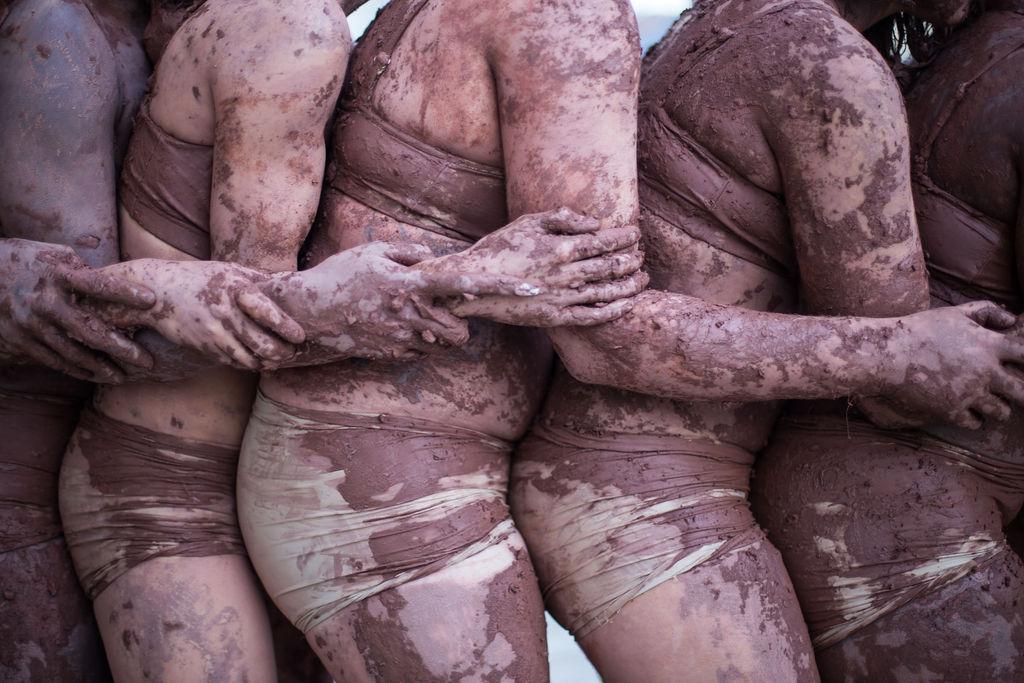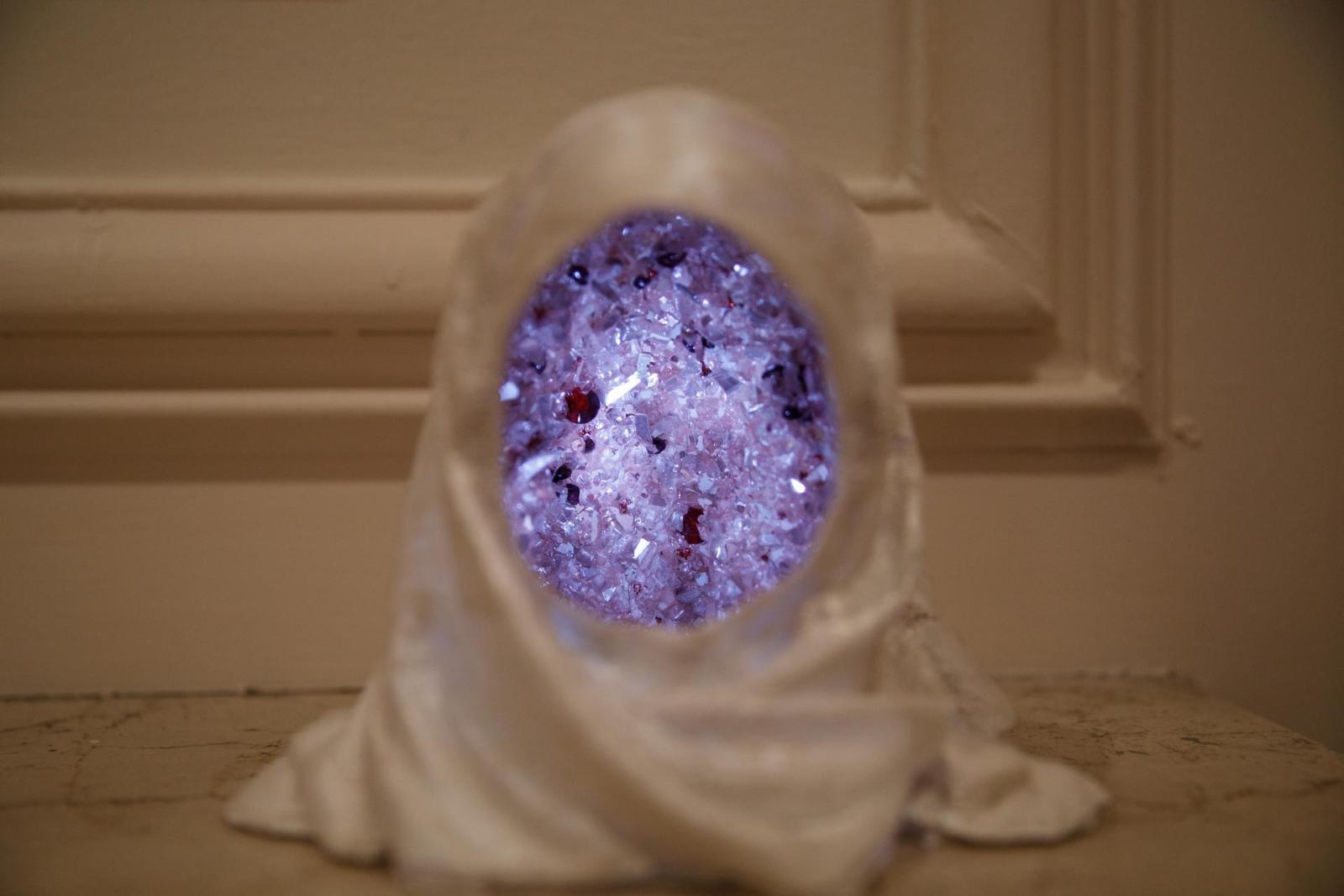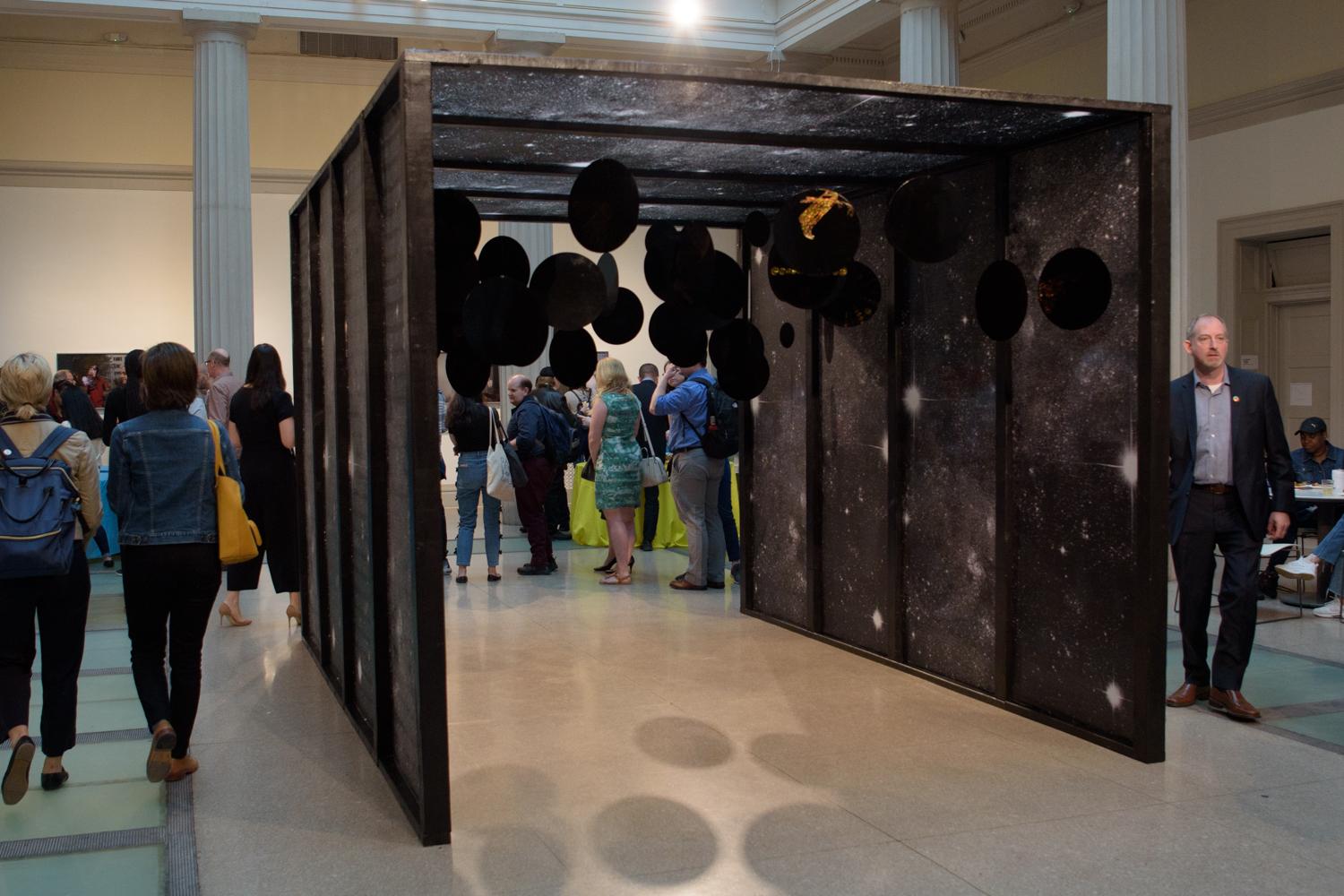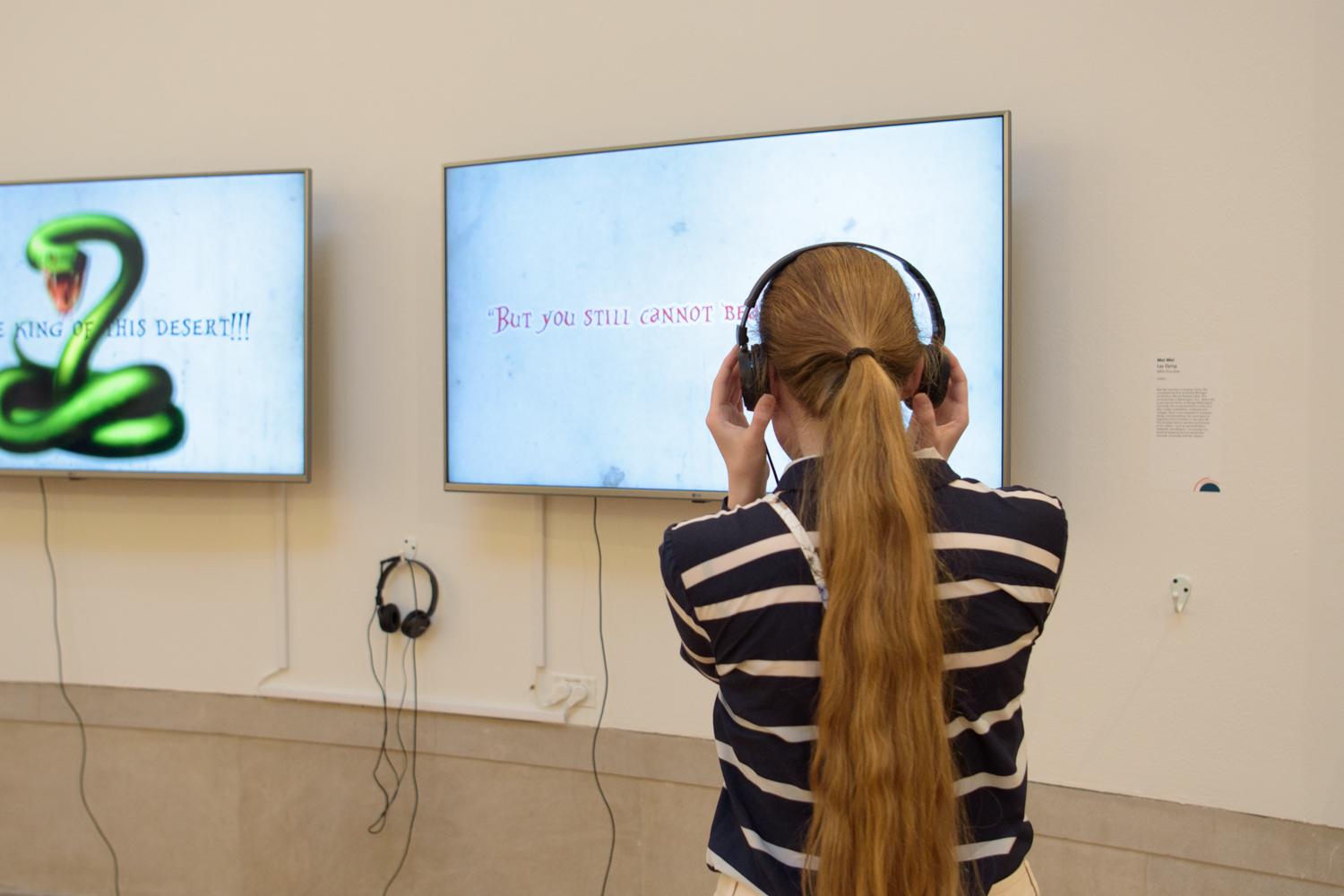By Ruth Steinhardt
Margaret Wroblewski has been a daily Metro commuter for years, and like many of her fellow riders, the Olney, Md., native has had her share of unpleasant experiences. But a particularly frightening encounter with an aggressive man a few years ago pushed her from discomfort to action.
“It was a fairly small incident, but it got me really angry,” she said. “I thought, ‘I have to do something about this, it’s disgusting.’”
Ms. Wroblewski’s master’s thesis project at the Corcoran School of the Arts and Design, entitled “Underground,” is the fruit of that resolution. It features 25 portraits of riders who have been sexually harassed on public transit, most in Washington, D.C., but some from other cities on the East Coast. Alongside the portraits, the victims share a short excerpt of their stories.
Ms. Wroblewski’s work is among those featured in “NEXT 2019,” the Corcoran’s annual thesis exhibition, which opened Thursday night. In the crowded Flagg Building, students and their families admired work by senior undergraduate students and graduate students in digital media design, fine art, graphic design, photography, theater, dance, photojournalism, art education, exhibition design and new media photojournalism.
NEXT will occupy the Flagg Building until mid-May, and its effect is transformative. The rotunda space is occupied by large-scale installations including senior Kelly Tumulty’s “A Place to Rest,” a dreamlike forest diorama where bones peek through moss. Downstairs, senior Seung Hyun Rhee’s “Homesick” explores the tension between his adopted home of Washington, D.C., and his home country of South Korea via photographic collages of Korean pop stars superimposed on spaces like his D.C. apartment.
Upstairs on the Flagg Building’s bridge at NEXT’s opening reception, visitors sat meditatively in real Metro seats installed next to Ms. Wroblewski’s large-scale photographs. The effect was to create a sense of intimacy by putting viewers alongside survivors.
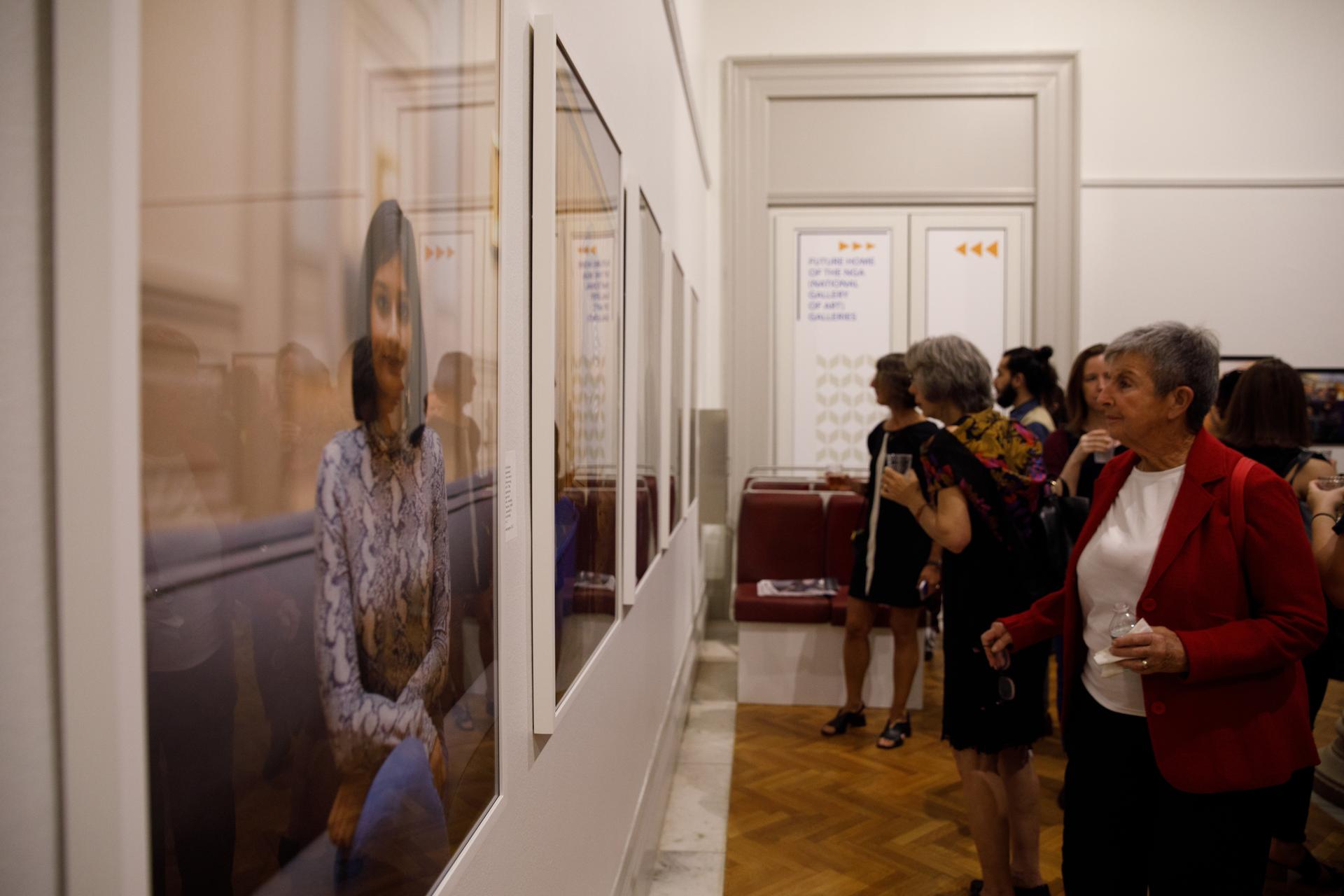
Guests take in Margaret Wroblewski's "Underground." (William Atkins/GW Today)
“I’ve had women reach out to me and say ‘Thank you for creating this project—now I know I’m not alone,’” said Ms. Wroblewski, who solicited stories and sitters via Instagram beginning in 2017. “I want to give space for women to talk about what happened to them and share it.”
In a downstairs gallery, Corcoran senior Renee Glanville’s thesis project addresses a different kind of communication. Ms. Glanville, a graphic design and digital media design student who is hearing-impaired, created her multimedia project, “Communication Access and Language Barriers,” out of a sense of frustration.
“People in the hearing community often expect members of the deaf community to be able to read their lips—the goal in the past has been to focus on speech,” Ms. Glanville said, through an interpreter. “But many deaf people struggle with lip reading, and it’s really very difficult.”
To demonstrate just how difficult, Ms. Glanville’s project invites viewers to try interpreting a short, silent close-up video of a woman speaking. The video then cuts to American Sign Language (ASL) speakers discussing their experiences and the language barriers the deaf community faces. Large-scale posters showing some basic ASL, including fingerspelling, accompany the video.
The video is “sort of a game, because I’d like to make it fun for people,” Ms. Glanville said. “But I also hope it’s an opportunity for the hearing community to understand a little of what lip-reading requires.”
NEXT 2019 will run through May 18, open from 10 a.m. to 6 p.m. Tuesday through Friday and from 1 to 6 p.m. Saturday and Sunday at the Flagg Building, 500 17th St., NW.


